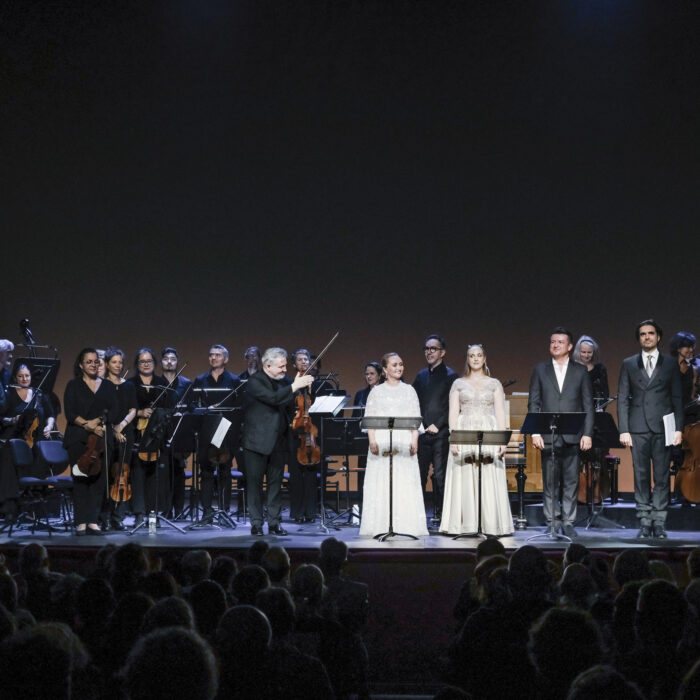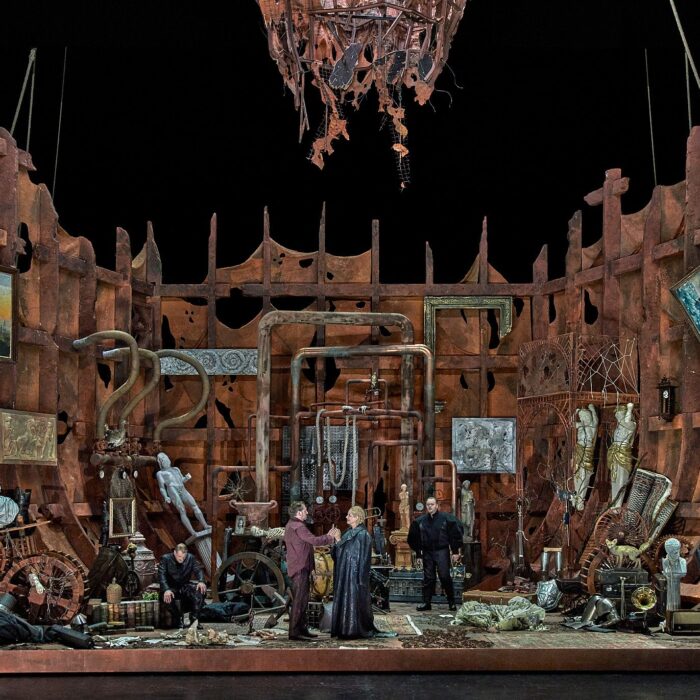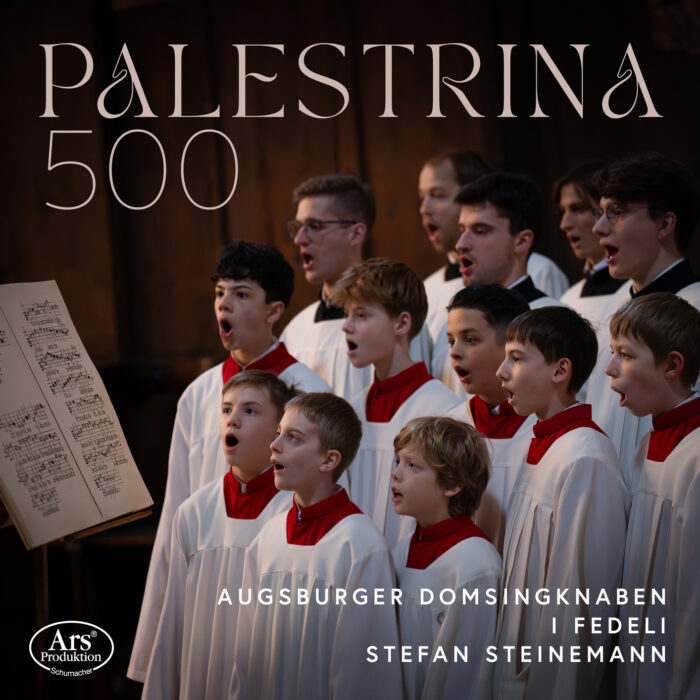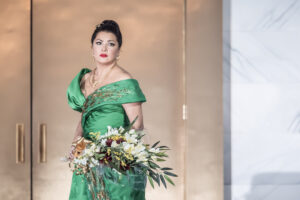
Royal Ballet & Opera 2025-26 Review: Tosca
Anna Netrebko Triumphs in ROH Return Alongside Freddie De Tommaso & Gerald Finley
By Mike Hardy(Credit: Marc Brenner)
I’ve previously opined that Puccini’s Tosca is perhaps among the least plausible of tales in the repertory and that the problem with long-running or much revived productions is that, unless you can constantly attract new audiences, they can only stand the test of time for so long.
This Oliver Mears’ exciting new production has the potential to address and rectify both these concerns.
Modern But Impactful
Firstly, because of its contrasting sets and paraphernalia, it has a timeless quality about it. Set in an indefinable era, its use of large clocks conveying the illusion that it could almost be present day, a concept not entirely alien, given the current instabilities in the world. Secondly, its clinical, sterile, starkness lends the production a more sinister, insidious flavour, far removed from the usual melodramatic costume drama affair that houses tend to present.
Simon Lima Holdsworth’s set designs are, by turn, bemusing and brilliant. Vast expanses of marble punctuate the first two acts. In the first, the church setting sees the marble Madonna set on a floor of marble, with marble walls and ceiling. Ostensibly set perhaps at the end of the Second World War, there are two, obviously carefully positioned piles of bomb debris, presumably created by one of the bomb raids of the type recreated later in the act. The usually employed, elaborate Michelangelo-type painting of Marchesa Attavanti/Mary Magdalene is dispensed with entirely, Cavaradossi’s easel turned round to show only its rear, the portrait remaining obscured.
The second act, and MORE expanses of marble for Scarpia’s quarters where he scoots and swivels around on a modern office chair on castors, eating take-away food and operating his contemporary-looking monitor by remote control. Huge sets of floor-to-ceiling doors serve as entry and exit points, and a second set that leads to an unseen area where Cavaradossi is tortured. A single, low-set marble ‘table,’ the only other feature in the roo,m which ends up serving as Scarpia’s eventual death ‘altar’, along with the single, brass candlestick-cum-ashtray in the corner, which doubles as his eventual murder weapon.
Such barren, insipid minimalism serves only to accentuate the shocking but brilliant brilliance of the final act setting; a small functioning office staffed by gaolers, with a conjoined, ceramic tiled execution area where the condemned, having been relieved of their few personal possessions, are made to kneel before being dispatched with a pistol shot to the back of the head. Clever blood-spatter effects a la Quentin Tarantino decorate the wall behind via a cleverly placed, hidden floor contraption. A single-glazed window looks out to the town below, which Tosca dramatically shatters with a chair before leaping to her oblivion.
Lighting director Fabiana Picciolic works wonderful magic with contracting spots, noisy and multi-colored ‘bomb’ flashes, and, by virtue of having vast spaces to be employed as canvases, impressive shadow-plays that almost tell a story in their own right, hugely intensifying the mood.
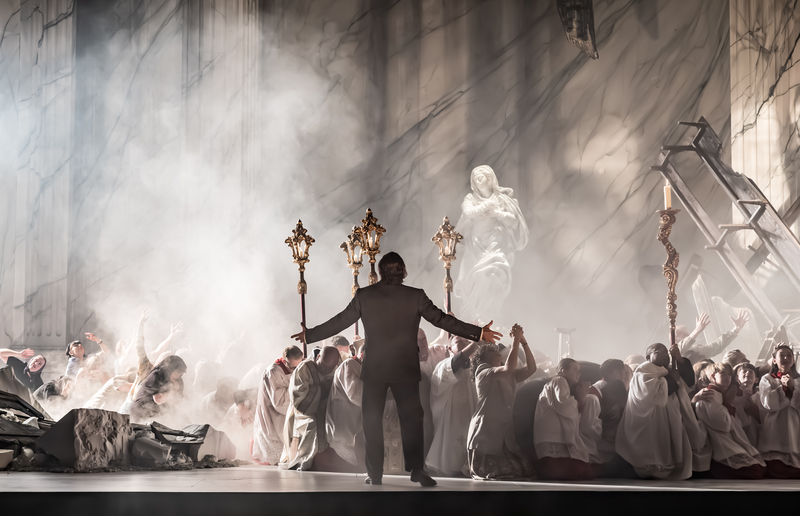
Marc Brenner
A Diva Returns
If Anna Netrebko, as Floria Tosca, had any concerns or reservations about her much-publicized, deliberated, and politically weaponized appearance here, she didn’t let them show. She strutted, postured and posed with all the undoubtable sass that she possesses, enhanced by some awesome costumes, courtesy of Ilona Karas; coquettish in the first act in a striking red dress and high heels where she teases and rebukes her lover in turn; flamboyantly resplendent in a stunning green and gold gown in the second act where she is torturously treated by Scarpia and oozing girl-next-door demureness in a simple floral dress in the final act where she informs Cavaradossi of her acts and plans; a veritable smorgasbord of dazzling color in an otherwise, drab and colourless staging.
I had read several critical reviews from other roles that, vocally, Netrebko was a fading force; that her gifts were waning, and that her voice had accrued some harshness and flaws. On this showing, I can assure you that that is not the case. There is some subtle change, some almost contralto-level tone in her lowest register, but she still possesses a voice of gleaming polish that was the hallmark of her earlier career, with a strong middle register and a thrilling top.
She was totally enchanting in the first act love duet and sang with palpable fragility in her first interactions with Scarpia, where he convinces her that her Cavaradossi has cheated.
Her ‘Vissi d’arte’ was excellent, dripping with anguish, and the ‘rimuneri’ on the last phrase, ‘perché me ne rimuneri cosi?’ seemed to last an eternity, as did the deserved vociferous applause and cheers from the delighted audience.
Her appearances at opera houses will no doubt be further contested, but her place as one of the world’s finest sopranos is still secure.
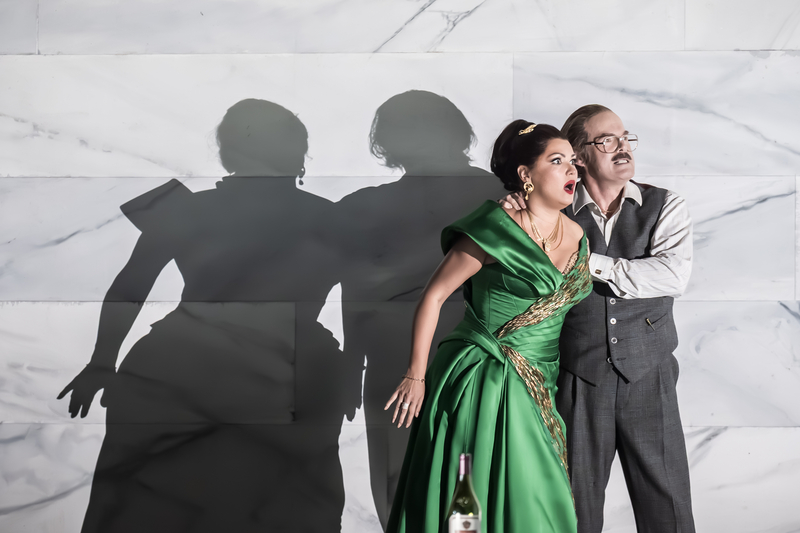
Marco Brenner
Star-Studded Cast
Freddie De Tommaso’s star really began to soar in 2021 after he famously stepped in for an ailing Bryan Hymel in this theatre in this very role. If he sounded anything like he did on this occasion, it’s easy to see why his popularity proved so exponential.
Some critics frequently refer to his need to employ a little more nuance or subtlety in his craft, to tone down the volume, but I believe his stentorian qualities are what make him such an inarguable star. That, combined with his almost animalistic propensity to hurl himself to all quarters of the stage with great physicality whenever the role demands it. Yes, the voice IS big (and Cavaradossi needs a big voice to rise above Puccini’s exuberant orchestration), but it borders on churlishness to suggest that his voice is lacking in either control or beauty.
His ‘Recondita Armonia’, always a big ask so early in the performance, was suitably rousing and had the audience fully enthused and engaged from the off.
His duet, in Act one was infused throughout with emotive inflection, a divine passage: “Quale occhio al mondo può star di paro” spun with fine legato, the voice softening in turn in the latter stages of the duet.
His ardent second cry of ‘Vittoria!’ in the second act was remarkable, not just for its inordinately sustained length, but for the final ‘a’, uttered whilst violently hurling a pointed, accusatory finger at his nemesis, Scarpia, without the intonation wavering one iota; an astonishing display of breath control.
His third act keynote aria, ‘E lucevan le stelle’, was flawless, employing a cross-section of his vocal prowess, and delivered with conviction and tangible vulnerability. It rightly brought the house down.
In my review of Freddie de Tommaso in ‘Carmen’, in this theatre, I referred to him as being “true class, without peer.” With this performance, he has solidified that assertion.
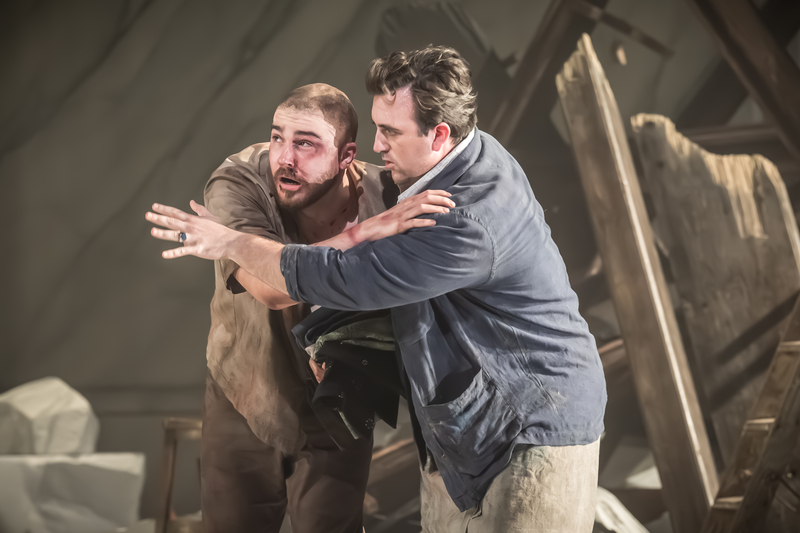
Marc Brenner
By default, the role of Scarpia, almost by necessity, is invariably portrayed as a melodramatic caricature of evil personified, a pantomime villain par excellence. Gerald Finlay avoids ostentatious brutishness and presents a more subtle, calculating, and utterly convincing monster. His rich, enveloping baritone possesses palpable beauty, almost too warm, soothing, and endearing for the nefarious Scarpia. But the beauty of his voice, like his innocuous demeanour, only serves to intensify the malevolence inherent in his performance. His leading of the first act ‘Te Deum’ is accomplished, but his second act “Già, mi dicon venal’, along with his interactions with Tosca, showcased both his vocal prowess and his superb acting.
Likewise, Carlo Bosi’s Spoletta, conventionally an obsequious, fawning lickspittle character, is here more of a sinister and malignant entity in his own right. Moreover, he sings with an impactful, bright tenor instrument.
I have reviewed British bass-baritone Ossian Huskinson as Angelotti previously, from last year’s performance, and this instance was better, if anything. He sings with a wonderful richness and plays the desperate, fleeing political prisoner with great authenticity. He is unquestionably destined for bigger and more demanding roles.
Veteran Italian baritone Alessandro Corbelli gives a splendidly comedic performance as the Sacristan, vocally adept and convincingly acted in his interactions with both Cavaradossi and, later, Scarpia in the first act.
Special kudos must be apportioned to 13-year-old Raphy Laming, who sang an exquisite ‘Io de’ sospir’, the young shepherd’s aria at the start of Act three, as I have ever heard.
Czech conductor Jakub Hrůša is in his first year at the Royal Opera as musical director, and he performed a sterling job here, the ever faithful and uber-gifted orchestra responding to his every baton sweep. He sailed through Puccini’s score majestically, the strings especially sounding stunning.
The chorus was, as ever, sublime, notably during the ‘Te Deum’, and the children’s chorus, courtesy of the Cardinal Vaughan School and the Grey Coat Hospital School, was both angelic and most proficient.
I do not wish to engage in discussing or commenting on the difficult and somewhat sensitive issues that are taking place in the world, particularly with respect to the conflict between Russia and Ukraine. There are far more erudite and insightful people than I who have opined on this matter. I will simply point out that the gathered demonstrators at both entrances of the opera house, protesting at the appearance of Anna Netrebko, proved to be inconsequential. The bigger, more accusatory protests, levied by Ukrainian artists and writers, along with some UK Members of Parliament, and former New Zealand Prime Minister Helen Clark, could have proved to be more damaging and were undoubtedly more troublesome for the Royal Ballet and Opera company.
That they resisted, under such intense pressure and demands to remove Netrebko, is to the company’s credit. The fact that every single performance she is booked to appear in is completely sold out is a true testament to the adage that “Art shines through.”

